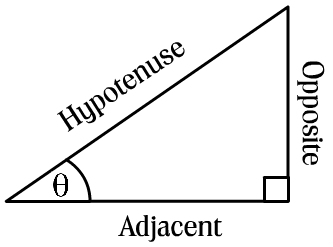 |
 |
 |
 |

|


|
|
|
|
|
|
#31
|
||||
|
||||
|
Quote:
|
|
#32
|
|||
|
|||
|
Quote:
This is neither here nor there, but that point reminds me of a really good Yogi Berra quote. Someone asked Yogi what time it was. He said, "You mean now?" Last edited by Honus; 11-12-2010 at 02:50 PM. |
|
#33
|
||||
|
||||
|
OK math geeks, up next is a detailed discussion of Newton's method for solving complex polynomials and numerous linear algebra problems of about 20 variables.
Trust me, you're going to need this in life. If you're a rocket scientist or economist. My high water mark in both math and computer programming was a Paschal program I wrote to perform Newton's method on complex polynomials up to x to the power of 10. It was fun.
__________________
Te futueo et caballum tuum 1986 300SDL, 362K 1984 300D, 138K |
|
#34
|
|||
|
|||
|
prime us first.
I get the math... but the concept and how it came to be still shakes me a little. |
|
#35
|
||||
|
||||
|
Quote:
That actually was the original question.
__________________
86 300SDL. 250,xxx on #14 Head. One eye always on temp gauge.  . Cruising towards 300K . Cruising towards 300K
|
|
#36
|
||||
|
||||
|
Quote:
If I did not score high enough on the math portion I can retake it but I will need to know the steps of the calculation.. Algbra not an issue trig for me always an issue. 
__________________
86 300SDL. 250,xxx on #14 Head. One eye always on temp gauge.  . Cruising towards 300K . Cruising towards 300K
|
|
#37
|
|||
|
|||
|
you are using the sine function as a value - incorrect.
you 'take' the sine 'of' some angle or radian measure.---this gives you a numeric value. |
|
#38
|
||||
|
||||
|
Quote:
 . How do you take the sine? I am trying to get my head around what should be a simple calculation and am not getting it. . How do you take the sine? I am trying to get my head around what should be a simple calculation and am not getting it.
__________________
86 300SDL. 250,xxx on #14 Head. One eye always on temp gauge.  . Cruising towards 300K . Cruising towards 300K
|
|
#39
|
||||
|
||||
|
Quote:
    . I would use the .2756 as the denominator under 300 to solve for x. . I would use the .2756 as the denominator under 300 to solve for x. Which is the S=O H Correct? I hope.......
__________________
86 300SDL. 250,xxx on #14 Head. One eye always on temp gauge.  . Cruising towards 300K . Cruising towards 300K
|
|
#40
|
|||
|
|||
|
so use the chart to get the values for sin of some angle. In this case 16* is your closest approximation on a timed exam with multiple choice.
|
|
#41
|
|||
|
|||
|
Quote:
yeppers. .2756 from the chart is the value for sine of 16* |
|
#42
|
||||
|
||||
|
So another question that sticks in my mind uses the angle of the sun and the length of a shadow cast from a flag pole. seeing that I have the Hyp angle and length ,I would use the cos to find the short leg?
which in this case would be the height of the flagpole?
__________________
86 300SDL. 250,xxx on #14 Head. One eye always on temp gauge.  . Cruising towards 300K . Cruising towards 300K
|
|
#43
|
|||
|
|||
|
Quote:
in order to find the value of a trig function by hand, you would need to expand a Taylor series. No way thats happening on a timed exam with any accuracy. you either have a slide rule, the tables or remember a bunch of values. and you convert degrees to radians, when needed. |
|
#44
|
|||
|
|||
|
Quote:
 given: hyp = h ; theta= b sin(b)=Opposite/h ==> sin(b) * h =opposite I am assuming theta is the angle you're talking about. The sun is at the top right. "the short leg" is 'opposite'. if the short leg is "adjacent" cos(b) = adjacent/h ==> cos(b) * h = adjacent Last edited by jt20; 11-12-2010 at 08:06 PM. Reason: can't think and type apparently |
|
#45
|
||||
|
||||
|
Thank you all for the help.
Jt20 that picture will be filed. That is the piece of info I needed. I should not a have an issue if I need to take this thing over.
__________________
86 300SDL. 250,xxx on #14 Head. One eye always on temp gauge.  . Cruising towards 300K . Cruising towards 300K
|
 |
| Bookmarks |
|
|